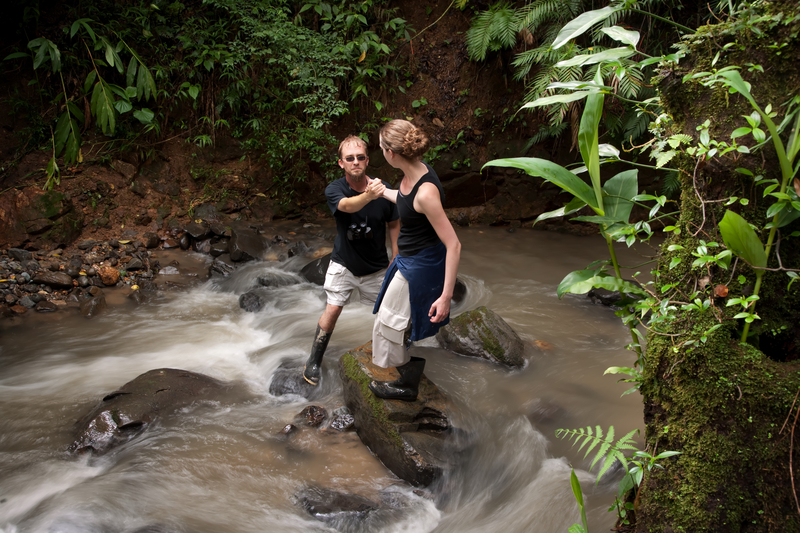While a perilous river-crossing experience makes for an entertaining story to tell your friends and family, it’s not worth the risk to your life. Learn how to properly and safely cross any river, stream, creek or rapids by following these 7 tips:
1. Do Not Cross Deep Rivers
Even if it looks calm, a river with a thigh high water level can be incredibly dangerous dangerous. Do not cross rivers with strong currents. Look for a shallow spot to cross and if you need a little help judging the flow rate of the river toss a handful of leaves or dirt into the stream.
2. Leave Your Boots On
Wear your boots while crossing — they have traction and protect your feet from hazards. You can also use light water shoes with traction but these can be easily broken. Just be sure you let them dry out afterwards to avoid getting blisters or worse, trench foot.
3. Use Walking Sticks For Balance
You can make one with minimum effort. Just grab any long branch of a tree. Keep your walking stick on the upstream side to ensure the current will keep the sticks in place. Put your weight into the current while shuffling your feet sideways.
If you find yourself crossing fast waters, remember to face upstream.
However, if you’re on the downstream side, don’t use two trekking poles at once because the narrow tip might get caught between rocks and boulders which may cause you to lose balance.
4. Unbuckle Your Bag
Before crossing a river, make sure to untie your waist belt or sternum strap from your bag. If you have a waterproof pack or even a dry bag inside your pack, it can make it usable as a flotation device.
5. Wear Proper Clothes
The ideal clothing to use when crossing streams or rivers are shorts or pants made out of a wicking material.Always carry extra clothes to change into after fording a river to avoid chafing and possible hypothermia.
6. Look Before You Leap
The depth and speed of the water could change in seconds. Avoid crossing a river when it’s raining. If possible cross the widest part of the river.
7. Wear A Personal Floatation Device
You can purchase a floatation device online or from your go-to survival gear shop. Choose a lightweight one that’s easy to carry and pack.
Do you have any other tips for safely crossing rivers, streams and other bodies of water in the wilderness?
Article Source: Survival Life
